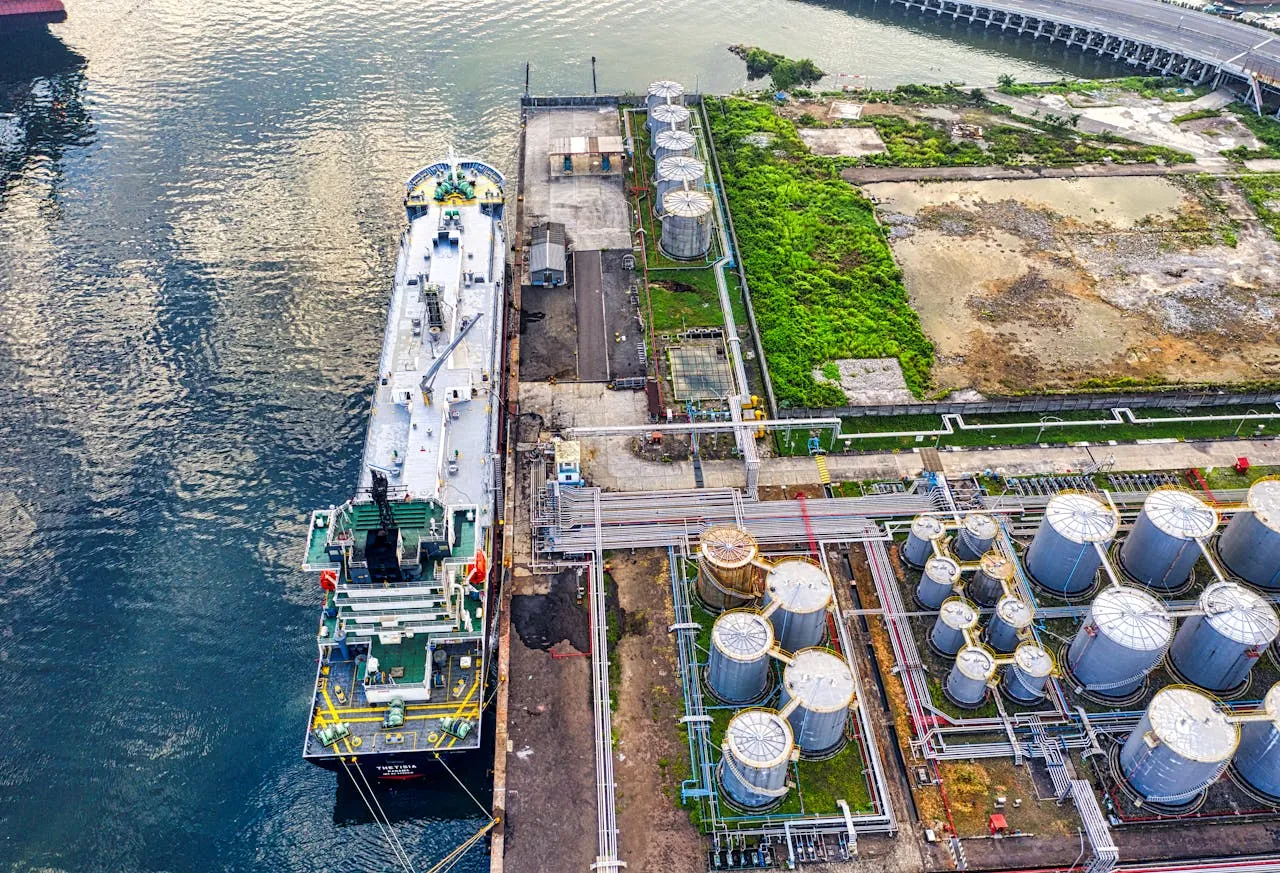
Glenfarne and Baker Hughes Forge Strategic Alliance to Advance the Alaska LNG Project
Alaska LNG, majority owned and developed by Glenfarne Alaska LNG, LLC (Glenfarne), and Baker Hughes (NASDAQ: BKR), a leading global energy technology company, have announced a series of definitive agreements to advance the long-anticipated Alaska LNG Project. The partnership marks a major milestone for one of the United States’ most significant natural gas infrastructure initiatives, designed to unlock Alaska’s vast North Slope gas resources for both domestic and international markets.
Under the agreements, Glenfarne has selected Baker Hughes as the supplier of the main refrigerant compressors for the Alaska LNG terminal and the power generation equipment for the North Slope gas treatment plant. Beyond providing advanced technology solutions, Baker Hughes has also committed to a strategic investment in the Alaska LNG Project, underscoring its confidence in the project’s long-term economic and energy potential.
The agreements were formalized during a ceremony in Washington, D.C., attended by U.S. Secretary of the Interior Doug Burgum and Secretary of Energy Chris Wright, who both hailed the project as a vital step toward strengthening America’s energy security and leadership in global LNG markets.
Strengthening Energy Security and Global Competitiveness
“Baker Hughes is a welcome partner for Alaska LNG because of their leadership in LNG compression technology,” said Brendan Duval, CEO and founder of Glenfarne. “Their participation reflects the project’s momentum and its ability to attract world-class partners to achieve both national and state energy objectives.”
Lorenzo Simonelli, Chairman and CEO of Baker Hughes, emphasized the company’s commitment to providing cleaner, more efficient energy solutions. “Natural gas and LNG provide secure, affordable, and reliable energy,” Simonelli said. “We are proud to support Alaska LNG with our advanced gas technology solutions and look forward to working closely with Glenfarne to bring lower-carbon natural gas from Alaska to the global market.”
U.S. Leaders Endorse the Project’s National Significance
At the announcement, Secretary of the Interior Doug Burgum underscored the broader strategic and economic implications of the Alaska LNG initiative. “American LNG is not just an energy source—it’s a strategic asset that powers our economy, strengthens our alliances, and secures our nation’s future,” Burgum said. “By forging this strategic alliance and investment in the Alaska LNG Project, we’re advancing a bold vision for U.S. energy independence and competitiveness. Through partnerships with industry leaders like Glenfarne and Baker Hughes, we’re building the infrastructure and alliances that ensure U.S. leadership in reliable, responsible, and affordable energy for decades to come—starting right here in Alaska.”
U.S. Secretary of Energy Chris Wright echoed this sentiment, calling the Alaska LNG Project “one of the most significant energy infrastructure developments in our nation’s history.” He added, “Today’s announcement represents a major step forward for Alaska’s economy and for America’s energy security. The administration remains committed to unleashing Alaska’s vast energy potential, including supporting the continued progress of Alaska LNG.”
A Two-Phase Development Plan
Glenfarne is pursuing the Alaska LNG Project through a two-phase development plan designed to accelerate execution and optimize financing.
Phase One will involve the construction of an 807-mile, 42-inch natural gas pipeline stretching from Alaska’s North Slope to Southcentral Alaska. This pipeline will not only provide a vital link for Alaska’s domestic energy needs but also lay the groundwork for LNG export capabilities. Engineering and cost analysis for the pipeline, led by global engineering firm Worley, are expected to be completed by December 2025, paving the way for a Final Investment Decision (FID) shortly thereafter.
Phase Two will include the development of a large-scale LNG export terminal and supporting infrastructure, designed for a total capacity of 20 million tonnes per annum (MTPA). This phase is expected to reach FID in late 2026, following the completion of front-end engineering and design (FEED) studies and the securing of long-term offtake agreements.
Growing International Interest and Commercial Progress
Since assuming the role of lead developer in March 2025, Glenfarne has made significant progress in advancing Alaska LNG’s commercial and strategic partnerships. The company has already secured preliminary commercial commitments for 11 MTPA of LNG—representing more than 60% of the total capacity required to reach FID.
These agreements include memorandums of understanding and early-stage offtake arrangements with several of Asia’s leading energy buyers, such as Tokyo Gas, JERA Co., Inc., POSCO International Corporation, and utilities in Japan, Korea, Taiwan, and Thailand. These partnerships highlight strong Asian demand for long-term U.S. LNG supplies amid global efforts to enhance energy security and diversify fuel sources away from volatile markets.
Glenfarne’s CEO Brendan Duval emphasized that these commercial milestones reflect growing confidence in Alaska LNG’s viability and global relevance. “This project not only secures Alaska’s role in the global LNG trade but also provides clean, dependable energy to nations seeking to transition toward lower-carbon economies,” he said.
Baker Hughes’ Strategic Role
Baker Hughes’ involvement builds on its deep expertise in LNG technologies and global project execution. The company’s compression and power generation equipment are essential for the liquefaction process, enabling efficient conversion of natural gas into LNG for export.
Baker Hughes and Glenfarne have already collaborated on other North American LNG initiatives, including Texas LNG, one of Glenfarne’s Gulf Coast projects. For that project, Baker Hughes is also providing key compression technology, reflecting a growing partnership between the two companies across Glenfarne’s broader LNG portfolio.
Expanding Glenfarne’s LNG Footprint
With the addition of Alaska LNG, Glenfarne’s North American LNG portfolio now totals 32.8 MTPA of permitted capacity across projects in Alaska, Texas, and Louisiana. This makes Glenfarne one of the fastest-growing independent developers of LNG export infrastructure in the Western Hemisphere.
Each of these projects supports Glenfarne’s overarching strategy to supply reliable, low-carbon natural gas to meet the world’s evolving energy needs while advancing the energy transition. Alaska LNG, in particular, stands out for its potential to leverage one of the largest untapped gas reserves in North America, providing both local and global benefits.
A Vision for the Future
The alliance between Glenfarne and Baker Hughes represents far more than a commercial partnership—it reflects a shared commitment to developing energy infrastructure that supports energy security, economic growth, and decarbonization.
As global demand for LNG continues to grow—particularly across Asia—projects like Alaska LNG are increasingly viewed as critical components of a balanced and sustainable global energy system. For Alaska, the project promises thousands of construction jobs, long-term economic benefits, and a new era of energy leadership rooted in innovation and responsibility.
“Alaska LNG is not just a project; it’s a vision for the future of American energy,” said Duval. “With Baker Hughes as our partner, and with strong support from federal and state leaders, we are turning that vision into reality.”
Source Link: https://www.businesswire.com/











